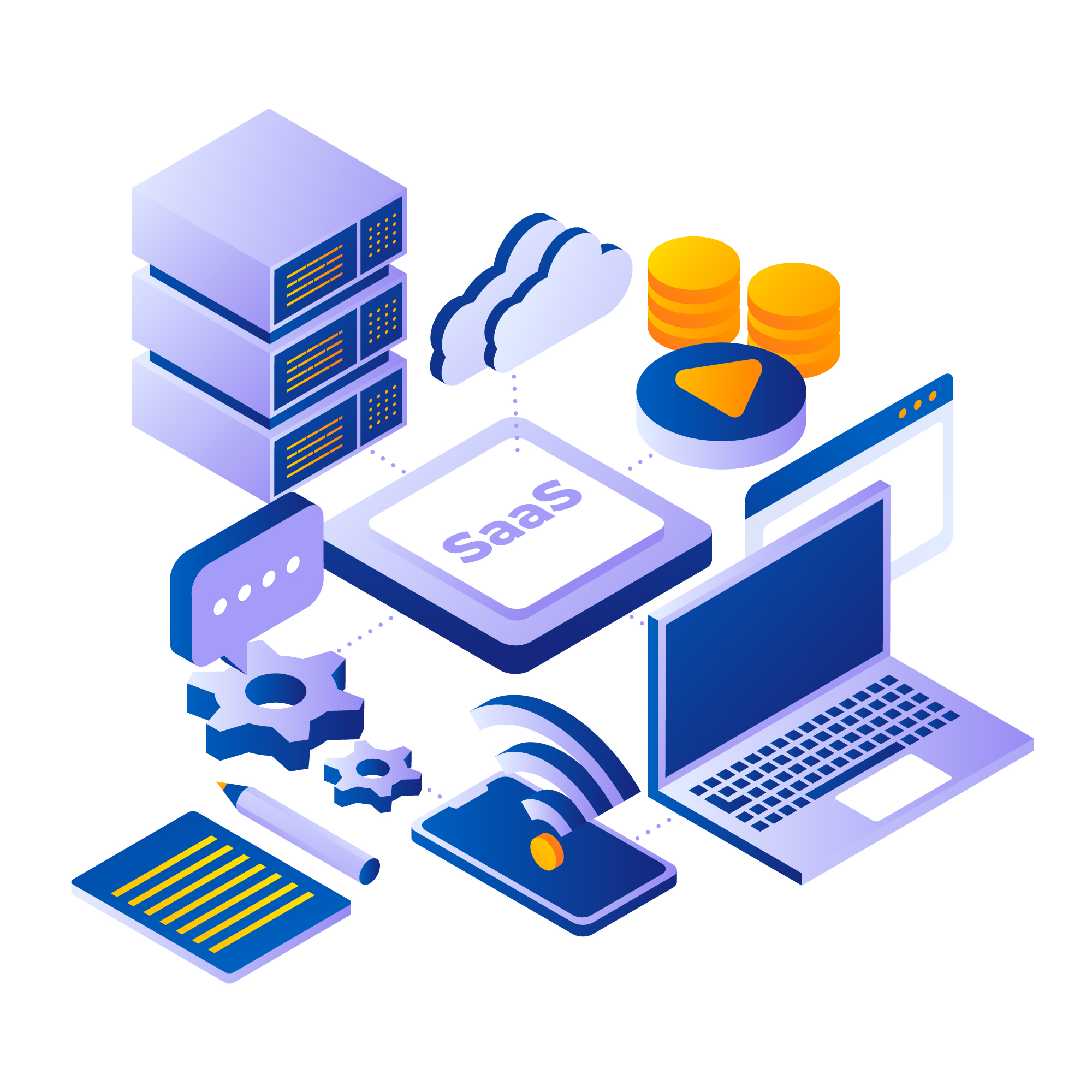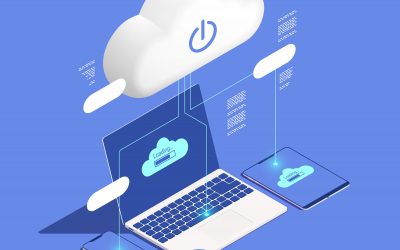How to make a SaaS application? SaaS (Software-as-a-Service) is a software delivery model that is highly valued for its practicality. It allows applications to be accessed via a web browser without the need for installation or strict contracts, providing flexibility and accessibility. A thorough understanding of this model is essential for the successful creation of SaaS software. This guide offers all the necessary information to create and launch your own SaaS software.

What is a SaaS application?
Software as a Service (SaaS) is a sales model that has gained popularity in recent years, gradually replacing traditional licenses. SaaS products are accessible online, which allows users to utilize them without the need for installation, simplifying access and use.
Some popular examples of SaaS companies include Dropbox and Google Apps. These products offer a flexible alternative to lifetime licenses by being distributed via a subscription model.
Advantages of SaaS
SaaS applications offer many advantages, including :
- Security: User data is securely stored and backed up.
- Scalability: Upgrades or downgrades can be easily implemented as required.
- Reliability: Servers can be located anywhere in the world, ensuring constant availability.
- Regular revenues: The subscription model guarantees a regular revenue stream for developers.
- Lower costs: SaaS reduces development costs, as there’s no need to buy or maintain expensive hardware.
Types of SaaS applications
There are a variety of cloud-based application options available, including:
- E-commerce software: Businesses can sell their products or services online using e-commerce software platforms such as BigCommerce and Shopify. and provide features such as inventory management, online payments, and website creation.
- Vertical SaaS: This refers to software that provides solutions that are specific to a particular niche or industry. These products are specifically designed to meet the diverse needs of different business sectors, such as healthcare, education, and tourism. For example, a vertical SaaS solution created for the healthcare industry can offer effective ways to manage electronic medical records.
- Collaboration Tools: Designed to simplify communication and information sharing within a team or organization by providing features like file sharing, virtual whiteboards, virtual meeting rooms, and instant messaging capabilities. Miro is a collaboration program that can help teams work together effectively, even when team members are not in the same location.
SaaS application development team composition
To develop cloud-based SaaS software, a team of professionals with specific skills is required. The SaaS development team is composed of:
- The project manager, who plans and coordinates all phases of SaaS software development to ensure that the project meets deadlines and goals.
- A business analyst who analyzes market and user data to identify software needs and requirements and helps steer development in the right direction.
- The UI/UX designer is responsible for creating an interface that is both appealing and user-friendly, ensuring an optimal user experience for SaaS software customers.
- The backend developer is responsible for implementing the server-side functionalities of SaaS software, ensuring its robustness, security, and reliability.
- The quality manager tests SaaS software for defects and reports any problems to the team. The roles within the team may vary depending on project needs and the adoption of DevOps methodology.
The team composition may vary based on project size and allocated resources. It may be necessary to include additional experts or technical staff. In the case of a project following the DevOps methodology for Software as a Service (SaaS) projects, a DevOps engineer is considered essential. Altcode has a team of professionals with a high level of skill and expertise to meet project requirements.
SaaS product development process: How to make a SaaS application from scratch
The following steps are the answer to how to make a SaaS application:
- Market analysis: To create SaaS applications, it’s important to conduct a thorough market analysis before you take the plunge. This step enables you to validate your idea and understand the competitive landscape by studying market trends, potential customers’ needs, and competitors’ strategies. You will be better equipped to develop a SaaS product that meets market needs and distinguishes itself from the competition.

- Developing a minimum viable product (MVP): Building a minimum viable product (MVP) is a critical step in the SaaS software development process. Identify the essential features that will bring real added value to your users. By focusing on the fundamental aspects of your product, you can bring it to market quickly. Then gather feedback to fine-tune based on user feedback.
- Choose your pricing model: When choosing your pricing model, it is important to make the right strategic decision. To determine the appropriate pricing model, it is important to study user needs and behaviors.
- The technical aspects: The decisions you make early in the development process will have a significant impact on the success of your SaaS product. Carefully consider the architecture and technologies on which you will build your solution.
- Assemble a development team: Putting together a competent, complementary team is critical to the success of your SaaS project. Hire professionals experienced in software development, UX/UI design, marketing, and project management. Ensure that every team member shares your vision and commitment to the product’s success.
How to convert an existing application to a SaaS model
To convert your software into a SaaS business, follow four main steps.
- Analyze your software: The first step is to analyze the functionality and performance of your software in comparison to other solutions already on the market. Second, identify your product’s strengths, weaknesses, and opportunities. Third, determine its suitability for SaaS transformation.
- Assemble a team: To effectively manage the changes required to move your software to the SaaS model, assemble a skilled and experienced team. Ensure that each team member possesses the necessary skills to meet the challenge and achieve your objectives.

- Choose a cloud service provider: When considering a cloud service provider, it is important to carefully evaluate your options and select a provider that best aligns with your software and business requirements.
- Migrate to the cloud: It may be helpful to compare offers, features, and prices to ensure that you are making an informed decision. Once you have selected a provider, it is recommended that you migrate your software to their cloud infrastructure. We recommend taking steps to ensure a smooth and secure migration process to optimize the online availability of your software.
What are the key SaaS metrics you should be tracking?
Evaluating the performance of your business is essential as a business owner. While tools like Google Analytics or Hotjar can be useful, they may not provide all the necessary information.
To assess the performance of your SaaS software, monitor these key indicators:
- Monthly or annual revenue: Total revenue generated by your SaaS software each month or year.
- Customer Acquisition Cost (CAC): Amount spent to acquire a new customer.
- Customer Lifetime Value (LTV): Total value a customer generates over its lifetime.
- Net Promoter Score (NPS): Measure of customer satisfaction and brand loyalty.
- Churn rate: The percentage of customers who unsubscribe from your service during a specific period is a crucial metric for evaluating and enhancing the performance of your SaaS software.
The percentage of customers who unsubscribe from your service during a specific period is a crucial metric for evaluating and enhancing the performance of your SaaS software. It is essential to carefully monitor this key indicator. Regularly analyzing sales, customer acquisition cost, customer lifetime value, Net Promoter score, and churn rate can help you improve your service. You can make informed decisions to optimize your product and sales strategy, ensuring your company’s long-term growth and success.
Summary
In conclusion, knowing how to make a SaaS application is challenging but rewarding. It requires careful planning, a skilled team, and effective resource management. By following the guidelines in this document, you’ll have the tools needed. This will help you successfully create and launch your own SaaS software.
Whether you are considering migrating to SaaS or designing a new product, Altcode‘s team of engineers can assist you with the development, allowing you to focus on other aspects of your business.
Contact Altcode for more information.




